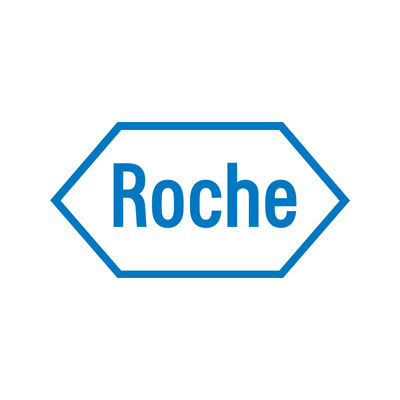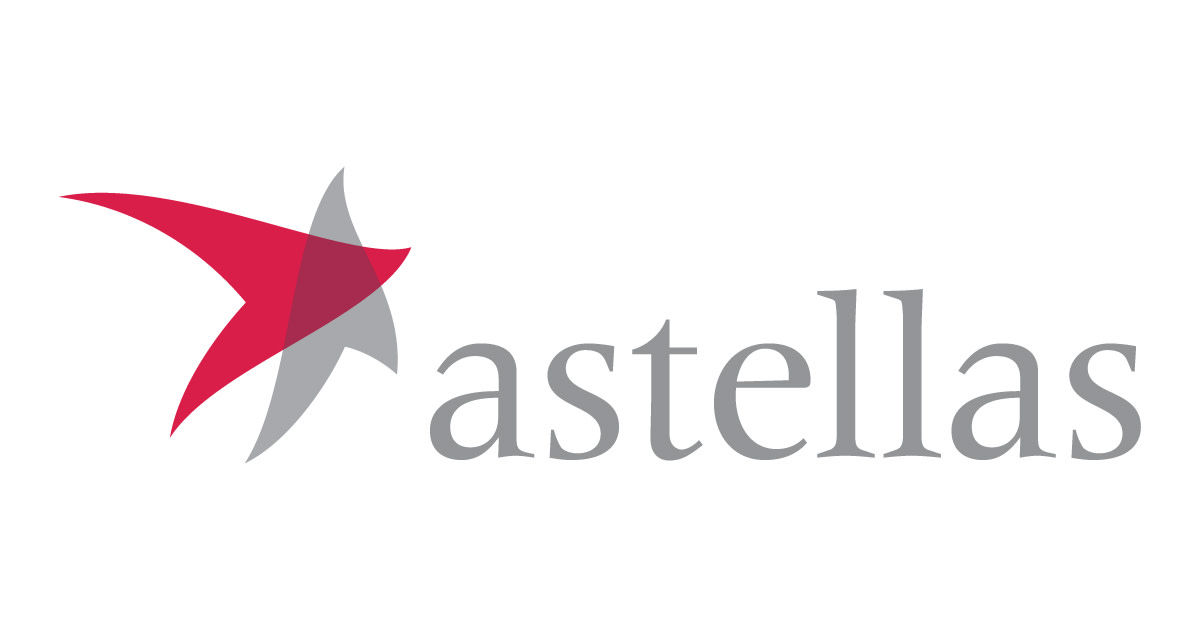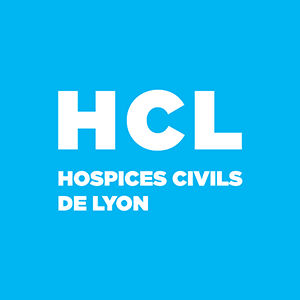预约演示
更新于:2025-05-07
Anti-N-Methyl-D-Aspartate Receptor Encephalitis
抗-N-甲基-D-天冬氨酸受体脑炎
更新于:2025-05-07
基本信息
别名 Anti N Methyl D Aspartate Receptor Encephalitis、Anti NMDA Receptor Encephalitis、Anti NMDAR Encephalitis + [54] |
简介 Disorder characterized by symptoms of CATATONIA; HYPOVENTILATION; DYSKINESIAS; ENCEPHALITIS; and SEIZURES followed by a reduced CONSCIOUSNESS. It is often followed by a viral-like prodrome. Many cases are self-limiting and respond well to IMMUNOMODULATORY THERAPIES against the NMDA RECEPTORS antibodies. |
关联
7
项与 抗-N-甲基-D-天冬氨酸受体脑炎 相关的药物靶点 |
作用机制 Interleukin-6 receptor antagonists |
在研机构 |
在研适应症 |
最高研发阶段批准上市 |
首次获批国家/地区 加拿大 |
首次获批日期2020-06-01 |
作用机制 NMDA receptor调节剂 |
在研适应症 |
非在研适应症- |
最高研发阶段临床1期 |
首次获批国家/地区- |
首次获批日期1800-01-20 |
作用机制 NMDA receptor拮抗剂 |
在研适应症 |
非在研适应症- |
最高研发阶段临床前 |
首次获批国家/地区- |
首次获批日期1800-01-20 |
33
项与 抗-N-甲基-D-天冬氨酸受体脑炎 相关的临床试验NCT06753955
A Phase 1, Open-label Study to Evaluate the Safety, Tolerability, and Pharmacokinetics of a Single-dose of ART5803 Following IVIG Administration in Healthy Participants
This study will evaluate the safety, tolerability, and pharmacokinetics (PK) of ART5803 following IVIG administration in healthy participants to investigate the potential interactions between ART5803 and IVIG
开始日期2025-03-18 |
申办/合作机构 |
ChiCTR2500098739
Efficacy and Safety of Efgartigimod in Anti-NMDAR Encephalitis: A Multicenter, Randomized, Placebo-Controlled Clinical Study
开始日期2025-03-16 |
申办/合作机构- |
NCT06609044
Social and Psychological Long-term Impact of NMDA Receptor Encephalitis
NMDA receptor antibody encephalitis is a rare autoimmune neurological disease of the central nervous system with an estimated incidence of 1.5 people per million per year. Patients with anti-NMDAR encephalitis experience an acute phase of the disease characterized by psychosis, memory loss, seizures, autonomic nervous system instability, or coma. Since the discovery of this disease 14 years ago by Prof. Dalmau, the clinical presentation of the acute phase has been well characterized, while the psychosocial impact of the disease remains largely unexplored.
Currently, there are few cohort studies of patients that have identified persistent cognitive impairment as a factor impacting remission after the acute phase. Given the scarcity of information concerning the post-acute phase, it is therefore essential to determine the long-term social and psychological outcomes and their daily effects on the social and functional life of this severe disease. This is especially important as the patients are young, with a median age of 21 years, and may face lasting limitations potentially detrimental to their success in professional, educational, or social environments.
Currently, there are few cohort studies of patients that have identified persistent cognitive impairment as a factor impacting remission after the acute phase. Given the scarcity of information concerning the post-acute phase, it is therefore essential to determine the long-term social and psychological outcomes and their daily effects on the social and functional life of this severe disease. This is especially important as the patients are young, with a median age of 21 years, and may face lasting limitations potentially detrimental to their success in professional, educational, or social environments.
开始日期2024-12-16 |
申办/合作机构 |
100 项与 抗-N-甲基-D-天冬氨酸受体脑炎 相关的临床结果
登录后查看更多信息
100 项与 抗-N-甲基-D-天冬氨酸受体脑炎 相关的转化医学
登录后查看更多信息
0 项与 抗-N-甲基-D-天冬氨酸受体脑炎 相关的专利(医药)
登录后查看更多信息
2,537
项与 抗-N-甲基-D-天冬氨酸受体脑炎 相关的文献(医药)2025-07-01·Journal of Neuroimmunology
Recurrent anti-NMDA receptor encephalitis in first-trimester pregnancy with initially antibody-negative CSF
Article
作者: Shibuya, Jineane ; Jahansooz, Julia R ; Kameoka, Alyssa M ; Abramowitz, Janette
2025-07-01·General Hospital Psychiatry
Red flag: A notable proportion of anti-NMDAR encephalitis cases may be admitted to psychiatric units in general hospitals
Letter
作者: Nohara, Shigeru ; Satake, Naoko ; Nishimura, Katsuji ; Wada, Ken ; Tsujino, Naohisa ; Koishikawa, Hiraki ; Yokoyama, Shin ; Kato, On ; Sato, Shigeki ; Wada, Hisashi ; Kumazaki, Hirokazu ; Akahane, Takaki ; Hirata, Risa ; Hasegawa, Yusuke ; Funayama, Michitaka
2025-06-01·Psychiatry Research: Neuroimaging
Cognitive outcomes and performance of patients diagnosed and treated for N-Methyl-D-Aspartate receptor antibody-mediated (NMDAR) encephalitis compared with patients with schizophrenia and healthy controls
Article
作者: Boers, Peter ; Smyth, Shane ; Kelleher, Eric ; Costello, Daniel ; Corvin, Aiden ; McCabe, Dominick Jh ; Sweeney, Brian ; Hargreaves, April ; Donohoe, Gary ; Mothersill, David ; Chaila, Elijah ; Cotter, David ; Doherty, Colin P ; Murphy, Kieran C ; Barry, Helen
8
项与 抗-N-甲基-D-天冬氨酸受体脑炎 相关的新闻(医药)2024-11-22
FRIDAY, Nov. 22, 2024 -- Recovery from anti-NMDA receptor (anti-NMDAR) encephalitis continues for three years, but deficits persist, according to a study published online Nov. 20 in
Neurology
.
Juliette Brenner, M.D., from the Erasmus University Medical Center in Rotterdam, Netherlands, and colleagues conducted a large-scale cross-sectional and prospective cohort study to examine the temporal trajectory of anti-NMDAR encephalitis in patients aged older than 16 years who were independent prior to illness onset. Patients completed Patient-Reported Outcome Measures and neuropsychological assessments, and functional outcomes were assessed and compared to references.
Ninety-two patients were included in the study. The researchers observed improvement in cognitive scores with time of assessment, up to 36 months after diagnosis; the most enhanced improvement occurred in the first six months. In 12 prospective patients, this result could be reproduced. Thirty-four percent of patients had a persistent impairment beyond 36 months; 65 percent scored below-average in one or more cognitive domains, although the majority (91 percent) had a favorable outcome as measured by the modified Rankin Scale. Memory and language were the most affected. Persistent self-reported complaints were seen in emotional well-being, social functioning, energy levels, and quality of life. Some patients did not resume school/work or required adjustments (30 and 18 percent, respectively). There were associations observed for resuming school/work with processing speed and well-being.
"Our study found that recovery from anti-NMDAR encephalitis takes longer than previously thought, up to three years, and often with lingering memory, emotional, and social problems," coauthor Maarten Titulaer, M.D., Ph.D., also of the Erasmus University Medical Center, said in a statement. "Identifying subtle cognitive, social, or emotional symptoms is imperative, especially since this disease primarily affects young adults. The impact on their school, work, and social life can be immense."
Several authors disclosed ties to the biopharmaceutical industry.
Abstract/Full Text
Whatever your topic of interest,
subscribe to our newsletters
to get the best of Drugs.com in your inbox.
临床结果
2024-10-17
COLD SPRING HARBOR, N.Y., Oct. 17, 2024 /PRNewswire/ -- Imagine you wake up in a hospital without a single memory of the last month. Doctors say you had a series of violent episodes and paranoid delusions. You'd become convinced you were suffering from bipolar disorder. Then, after a special test, a neurologist diagnoses you with a rare autoimmune disease called anti-NMDAR encephalitis. This is what happened to Susannah Cahalan, a New York Post reporter who would go on to write the best-selling memoir Brain on Fire: My Month of Madness.
Continue Reading
Cold Spring Harbor Laboratory’s Furukawa lab is studying an autoimmune disease called anti-NMDAR encephalitis in collaboration with Professor Christian Geis’ team at the University of Jena and the SYNABS research unit in Germany. Here, we see antibodies from a human anti-NMDAR encephalitis patient (purple) binding to NMDARs (green) in a mouse brain. Areas marked red indicate high levels of antibody binding.
Anti-NMDAR encephalitis can lead to hallucinations, blackouts, and psychosis, says Cold Spring Harbor Laboratory Professor Hiro Furukawa. It mostly affects women ages 25 to 35—the same age at which schizophrenia often presents itself. But what's happening in anti-NMDAR encephalitis is something else.
Furukawa specializes in NMDARs, brain receptors that play a critical role in cognition and memory. "In anti-NMDAR encephalitis, antibodies bind to those receptors and prevent them from working," he explains. As an autoimmune response, the brain becomes inflamed—hence, Brain on Fire.
While some treatments are available, their effectiveness varies depending on symptom severity. New research from the Furukawa lab may explain why. In a recent study, Furukawa and colleagues map how antibodies from three patients bind to NMDARs. They find that the way in which each of the three antibodies binds to NMDARs differs. The discovery marks an important step in gaining a fuller understanding of anti-NMDAR encephalitis, a condition first diagnosed in 2008. Furthermore, it suggests personalized medicine may be critical for treating this disease.
"Distinct binding patterns manifest in different functional regulation levels in NMDARs," Furukawa explains. "This affects neuronal activities. So, different binding sites may correspond to variations in patients' symptoms." Uncovering those correlations could lead to more precise therapeutic strategies. Imagine, for example, that scientists identify several binding sites common among encephalitis patients. Pharmacologists could then design new drugs to target these sites. But that's not all. Personalized medicine could also mean more accurate diagnoses, Furukawa says.
"It's still a rare disease, but it could be misdiagnosed or underdiagnosed. Therefore, we need to spread awareness. Could, for example, some schizophrenic patients have this disease? Could it be caused by antibodies?"
Currently, it's said that anti-NMDAR encephalitis affects one in 1.5 million people. Yet, in time, we may find it's more common than previously assumed. That's a scary thought. However, it could explain why existing psychiatric medicine does not work for some people diagnosed with bipolar disorder and other mental health conditions—a huge revelation for patients as well as the families and therapists who care for them.
About Cold Spring Harbor Laboratory
Founded in 1890, Cold Spring Harbor Laboratory has shaped contemporary biomedical research and education with programs in cancer, neuroscience, plant biology and quantitative biology. Home to eight Nobel Prize winners, the private, not-for-profit Laboratory employs 1,000 people including 600 scientists, students and technicians. For more information, visit
SOURCE Cold Spring Harbor Laboratory
WANT YOUR COMPANY'S NEWS FEATURED ON PRNEWSWIRE.COM?
440k+
Newsrooms &
Influencers
9k+
Digital Media
Outlets
270k+
Journalists
Opted In
GET STARTED
2024-10-10
LA JOLLA, CA, USA I October 10, 2024 I
Arialys Therapeutics
, a clinical-stage biotechnology company pioneering new precision medicines for autoimmune neuropsychiatry, today announced that it has initiated dosing of healthy volunteers in its first clinical trial of ART5803. ART5803 is a therapeutic monoclonal antibody candidate designed to specifically compete with pathogenic autoantibodies targeting the NMDA receptor (NMDAR). Pathogenic anti-NMDAR autoantibodies cause anti-NMDAR encephalitis (ANRE), a devastating and underserved rare disease for which there is currently no approved therapy. Recent findings have also implicated anti-NMDAR autoantibodies in other neuropsychiatric diseases such as schizophrenia and dementia. Arialys anticipates initiating a Phase 2a proof of concept clinical evaluation of ART5803 in ANRE in the second half of 2025.
“ART5803 is a first-in-class precision therapeutic candidate and initiation of its clinical development is an important and exciting step towards the effective treatment of anti-NMDAR autoimmune neuropsychiatric diseases,” said Peter Flynn, Ph.D., President and CEO of Arialys Therapeutics. “In parallel to our clinical development efforts in ANRE, we are evaluating autoantibody levels and ART5803’s therapeutic potential in patients suffering from a broader set of neuropsychiatric diseases such as schizophrenia and dementia.”
The ART5803 Phase 1 clinical study is designed as a double-blind, placebo-controlled, first-in-human, single-ascending dose trial in healthy volunteers (ClinicalTrials.gov Identifier:
NCT06575153
). The study is being conducted in collaboration with Nucleus Network in Melbourne, Australia. The study will evaluate the safety, tolerability, and pharmacokinetics (PK) of ART5803 and is expected to enroll approximately 40 subjects.
Pending safety, tolerability, and PK assessments in healthy volunteers, Arialys anticipates initiating a Phase 2a proof-of-concept clinical trial of ART5803 in the second half of 2025, initially in patients with ANRE.
About ANRE and ART5803
Anti-NMDA receptor encephalitis (ANRE) is a rare, potentially lethal, poorly managed and often misdiagnosed neurological disease. ANRE is caused by pathogenic autoantibodies that bind NMDA receptors (NMDAR), resulting in loss of function and rapid onset of a range of symptoms, including psychiatric and behavioral alterations, cognitive decline, seizures, and diminished autonomic function. A significant percentage of ANRE patients are pediatric where NMDAR specific autoantibodies can also result in neurological development deficits. Recent findings have also identified anti-NMDAR autoantibodies in other neuropsychiatric diseases such as schizophrenia and dementia. Arialys has used co-crystallographic structural analysis of the autoantibody-NMDAR interaction to design a precision medicine approach to the treatment of neuropsychiatric disease. ART5803 is a therapeutic antibody that competitively blocks the pathogenic autoantibodies and rescues NMDAR function. Arialys has generated compelling preclinical data in higher disease models confirming ART5803 rapidly reverses the behavioral symptoms caused by NMDAR autoantibody pathogenicity in the brain. Arialys has received Orphan Drug Designation from the U.S. FDA for ART5803.
About Arialys Therapeutics
Arialys was founded to meaningfully expand the treatment possibilities for neuropsychiatric disorders driven by autoimmune disease. Using a combination of highly sensitive autoantibody detection, patient sampling, and receptor structural biology, Arialys has developed a first-in-class precision medicine to specifically block pathogenic autoantibodies in the brain. Arialys is headquartered in La Jolla, California. For more information, visit
www.arialysrx.com
.
SOURCE:
Arialys Therapeutics
临床1期孤儿药临床2期
分析
对领域进行一次全面的分析。
登录
或

生物医药百科问答
全新生物医药AI Agent 覆盖科研全链路,让突破性发现快人一步
立即开始免费试用!
智慧芽新药情报库是智慧芽专为生命科学人士构建的基于AI的创新药情报平台,助您全方位提升您的研发与决策效率。
立即开始数据试用!
智慧芽新药库数据也通过智慧芽数据服务平台,以API或者数据包形式对外开放,助您更加充分利用智慧芽新药情报信息。
生物序列数据库
生物药研发创新
免费使用
化学结构数据库
小分子化药研发创新
免费使用


